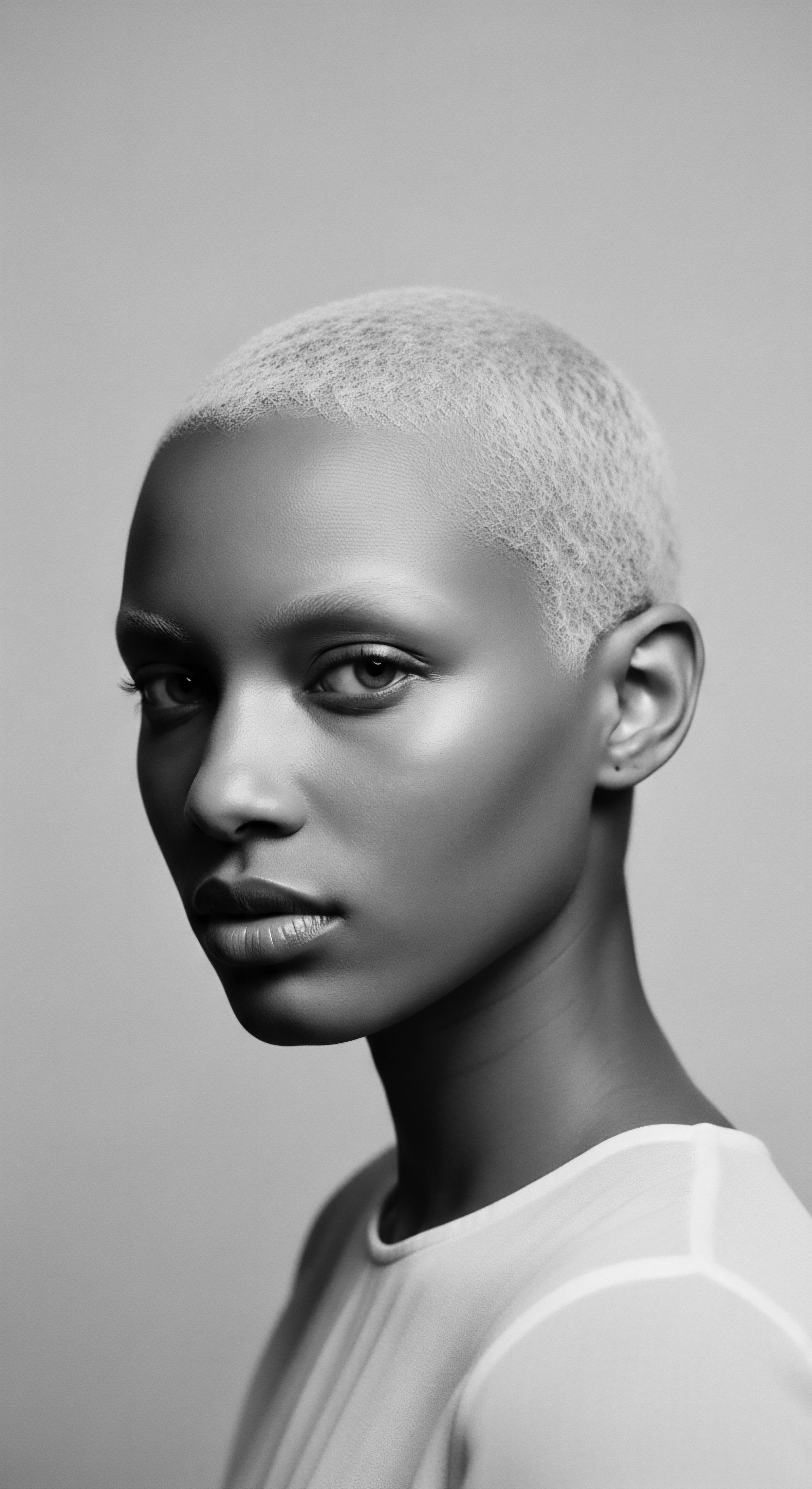
Fundamentals
The concept of Social Status, in its elemental interpretation, describes an individual’s standing or position within a societal structure. This standing is often determined by a complex interplay of factors, including wealth, occupation, lineage, and community influence. In many human collectives, visible markers serve as potent signals of one’s place within this hierarchy.
These markers can range from attire and dwelling to the very adornment of the body. Within this broader understanding, hair, particularly its texture, styling, and care, has historically served as a profound indicator of social standing, a silent language spoken across generations and cultures.
Across diverse human societies, hair has held an intrinsic connection to personal and communal identity. Its appearance often reflects a person’s age, marital state, spiritual commitments, or even their role in a community. For textured hair, this connection is particularly rich, steeped in ancestral wisdom and communal practices. The very act of hair care, from cleansing rituals to intricate braiding patterns, could signify belonging, celebrate achievement, or communicate a sacred purpose.
In many pre-colonial African societies, the elaborate cultivation of hair was a direct reflection of one’s social standing. The health and complexity of a hairstyle often communicated not just aesthetic preferences, but a person’s societal value.
Hair, in its fundamental essence, has long been a profound visual language of social standing across human societies, particularly within communities celebrating textured hair heritage.
Consider the myriad ways hair expressed social identity in ancient African civilizations. Specific styles could delineate a warrior from an elder, a married woman from a maiden, or a leader from a follower. These distinctions were not arbitrary; they were deeply integrated into the cultural fabric, guiding social interactions and reinforcing communal bonds. The tools, the time invested, and the communal aspect of hair dressing all contributed to its elevated position as a social signifier.
For instance, in some West African traditions, the artistry involved in complex braided styles could indicate a person’s tribal affiliation or their position within a lineage. The careful attention given to each strand, the shared moments of grooming, and the stories exchanged during these sessions, all contributed to a deep communal understanding of hair as a living symbol of heritage and collective well-being. These practices underscore how the physical manifestation of hair was inextricably linked to an individual’s place within the collective, a testament to the enduring power of ancestral wisdom in shaping social perceptions.

Intermediate
Moving beyond the foundational understanding, the intermediate meaning of Social Status, when viewed through the lens of textured hair, reveals a more intricate system of communication and control. This deeper interpretation acknowledges how hair, far from being a mere biological attribute, becomes a dynamic canvas upon which societal values, power dynamics, and historical narratives are inscribed. For individuals with textured hair, this has often translated into a complex negotiation between inherited cultural expressions and imposed societal standards.
Historically, the colonizing gaze frequently sought to dismantle existing social structures within African communities, and hair became a primary target in this endeavor. The deliberate stripping away of traditional hair care practices and the imposition of Eurocentric beauty standards served as a powerful mechanism to diminish the social standing of enslaved and colonized peoples. Hair that once signified royalty, spiritual connection, or communal identity was systematically devalued, often deemed “unruly” or “unprofessional.” This deliberate redefinition of beauty created a profound schism, forcing individuals to either conform to alien standards or face social and economic penalties.
The societal construct of “good hair” versus “bad hair” is a stark illustration of this historical imposition. “Good hair” typically referred to hair with straighter textures, closer to European ideals, while “bad hair” became a derogatory term for the rich, diverse textures of Black and mixed-race hair. This distinction was not organic; it was a byproduct of oppressive systems designed to maintain racial hierarchies. Generations learned to associate social acceptance and opportunity with hair that mimicked dominant aesthetics, leading to practices that, while sometimes offering a path to perceived advancement, often caused physical damage and psychological distress.
The intermediate understanding of Social Status through textured hair reveals a complex interplay of historical power, imposed beauty standards, and resilient acts of cultural preservation.
Within the African diaspora, hair care rituals became more than mere grooming; they transformed into acts of profound cultural preservation and resistance. The quiet moments of braiding, twisting, or oiling hair passed down through generations became a tender thread connecting descendants to ancestral wisdom, even in the face of immense pressure to assimilate. These practices, though sometimes privatized due to external scrutiny, maintained a silent, yet potent, declaration of identity and a defiance of imposed social subjugation.
The communal grooming sessions, which were central to social bonding and knowledge transfer in pre-colonial Africa, continued in various forms, albeit often in clandestine settings. These spaces became sanctuaries where ancestral techniques were shared, stories of resilience recounted, and a sense of collective belonging reaffirmed. The styles created within these intimate settings, though perhaps hidden from the wider oppressive society, continued to hold deep meaning within the community, acting as subtle markers of shared heritage and resistance.
The journey of textured hair through these historical currents reveals a persistent effort to reclaim and redefine its social meaning. The evolution of hair practices, from forced concealment to the vibrant expressions seen today, speaks to an ongoing reassertion of cultural pride and self-determination. The significance of hair in this context extends beyond mere appearance; it becomes a powerful medium for voicing identity, shaping communal narratives, and challenging prevailing notions of what is considered acceptable or esteemed within broader society.
Consider the rich tradition of hair adornments in various African societies. These were not simply decorative additions; they were integral to the hairstyle’s communicative function, often indicating wealth, marital status, or tribal identity.
| Aspect of Hair Hair Texture |
| Pre-Colonial African Context Celebrated in its natural forms, signifying lineage, health, and spiritual connection. |
| Colonial/Post-Colonial Impact on Social Standing Devalued, labeled as "nappy" or "unruly," pushing for chemical alteration to conform to Eurocentric ideals. |
| Aspect of Hair Hairstyles |
| Pre-Colonial African Context Intricate styles denoting age, marital status, tribal affiliation, social rank, or occupation. |
| Colonial/Post-Colonial Impact on Social Standing Suppressed or forbidden (e.g. Tignon Laws), leading to forced concealment or simplification, later seen as unprofessional. |
| Aspect of Hair Grooming Rituals |
| Pre-Colonial African Context Communal activities strengthening bonds, transmitting cultural knowledge, and signifying care. |
| Colonial/Post-Colonial Impact on Social Standing Disrupted or privatized, sometimes replaced by solitary, often painful, straightening processes for social acceptance. |
| Aspect of Hair This table illustrates the profound shift in the social meaning of textured hair, from a source of communal pride to a target of oppressive control, highlighting the enduring struggle for its reclamation. |
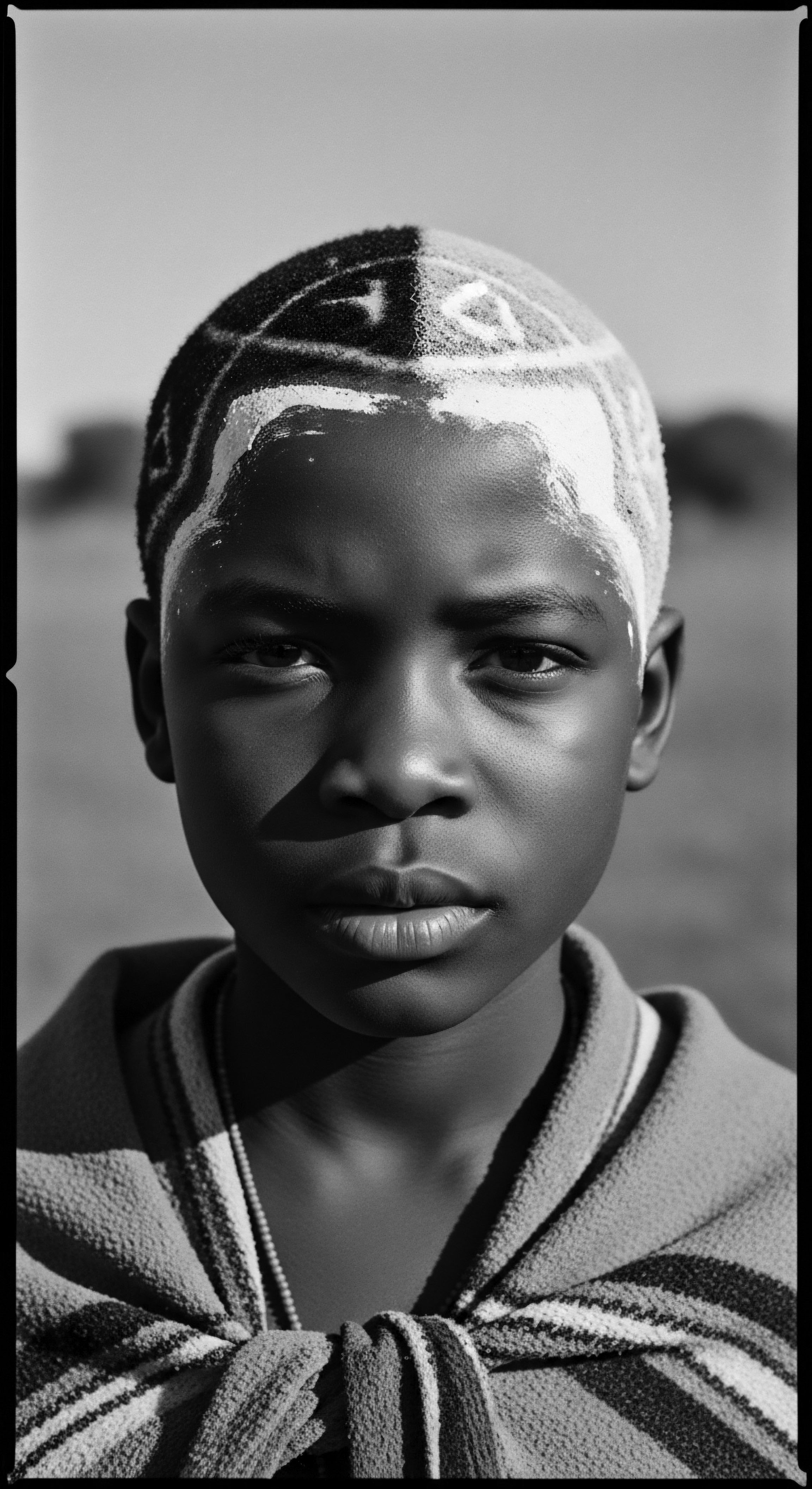
Academic
The academic definition of Social Status, when meticulously examined through the specific lens of textured hair heritage, reveals a deeply stratified and historically contingent system wherein hair functions not merely as a biological appendage, but as a potent semiotic instrument of social categorization, economic stratification, and cultural contestation. This conceptualization moves beyond simplistic notions of individual preference, situating hair within complex frameworks of power, identity, and systemic discrimination. It posits that an individual’s hair, particularly its adherence to or divergence from dominant aesthetic norms, can significantly determine their access to resources, opportunities, and social acceptance, thereby shaping their perceived and actual standing within a given societal matrix.
From a sociological perspective, hair, especially textured hair, serves as a visible marker of racial and ethnic identity. This visibility, in societies shaped by colonial legacies and racial hierarchies, often triggers implicit biases and overt discrimination. The concept of “hair politics” emerges here as a critical analytical tool, delineating the ways in which societal norms and legal structures regulate hair expression, particularly for Black and mixed-race individuals. These regulations, whether explicit or implicit, are not benign; they actively contribute to the perpetuation of social inequalities by linking hair presentation to notions of professionalism, respectability, and competence.
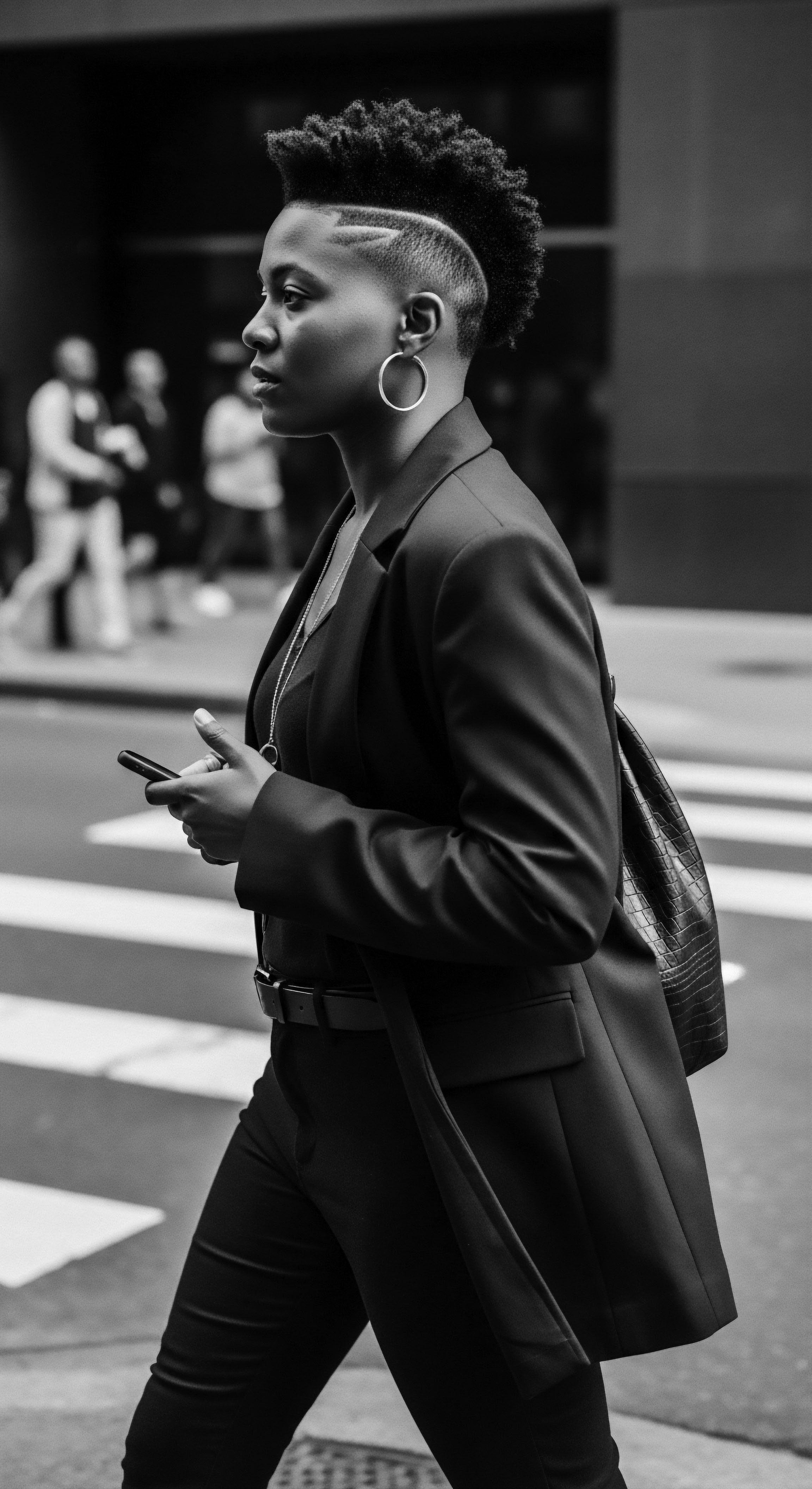
Historical Precedents ❉ The Tignon Laws as a Manifestation of Hair Politics
To grasp the profound implications of hair on social standing, one must delve into historical precedents that explicitly codified hair-based discrimination. A compelling instance is the enactment of the Tignon Laws in colonial Louisiana in 1786. Spanish Governor Esteban Rodríguez Miró issued a decree mandating that free Black women, known for their elaborate and artful hairstyles, cover their hair with a headscarf, or “tignon,” when in public.
The explicit aim of this legislation was to visually distinguish these women from white women and to reassert a racial hierarchy, thereby limiting their social mobility and perceived attractiveness to white men. As articulated by historians, the law sought to assert that free Black women were closer to enslaved women than to white women, functioning as an additional visual social marker.
The historical context of the Tignon Laws reveals a deliberate attempt to suppress the social influence and economic independence of free women of color, whose elaborate coiffures were seen as a challenge to the established order. Their hair, adorned with jewels, beads, and intricate patterns, was a vibrant expression of their cultural heritage and autonomy. The imposition of the tignon was a direct assault on this visual language of self-determination, an attempt to strip away a potent symbol of their elevated status and creativity within their communities.
The Tignon Laws stand as a historical testament to how external powers weaponized hair appearance to enforce social stratification and diminish the standing of free Black women.
Yet, the ingenuity and resilience of these women transformed an act of oppression into a defiant statement of cultural pride. They adorned their mandated tignons with luxurious fabrics, ribbons, and jewels, crafting them into stunning works of art that continued to express their individuality and heritage, circumventing the letter of the law while defying its spirit. This act of creative resistance underscores a recurring theme in the history of textured hair ❉ its capacity to become a site of profound cultural affirmation and a powerful voice against social subjugation. Even after the laws ceased to be enforced in the early 1800s, the tradition of elaborate headwrapping continued, becoming a symbol of resistance and a celebration of Black beauty.
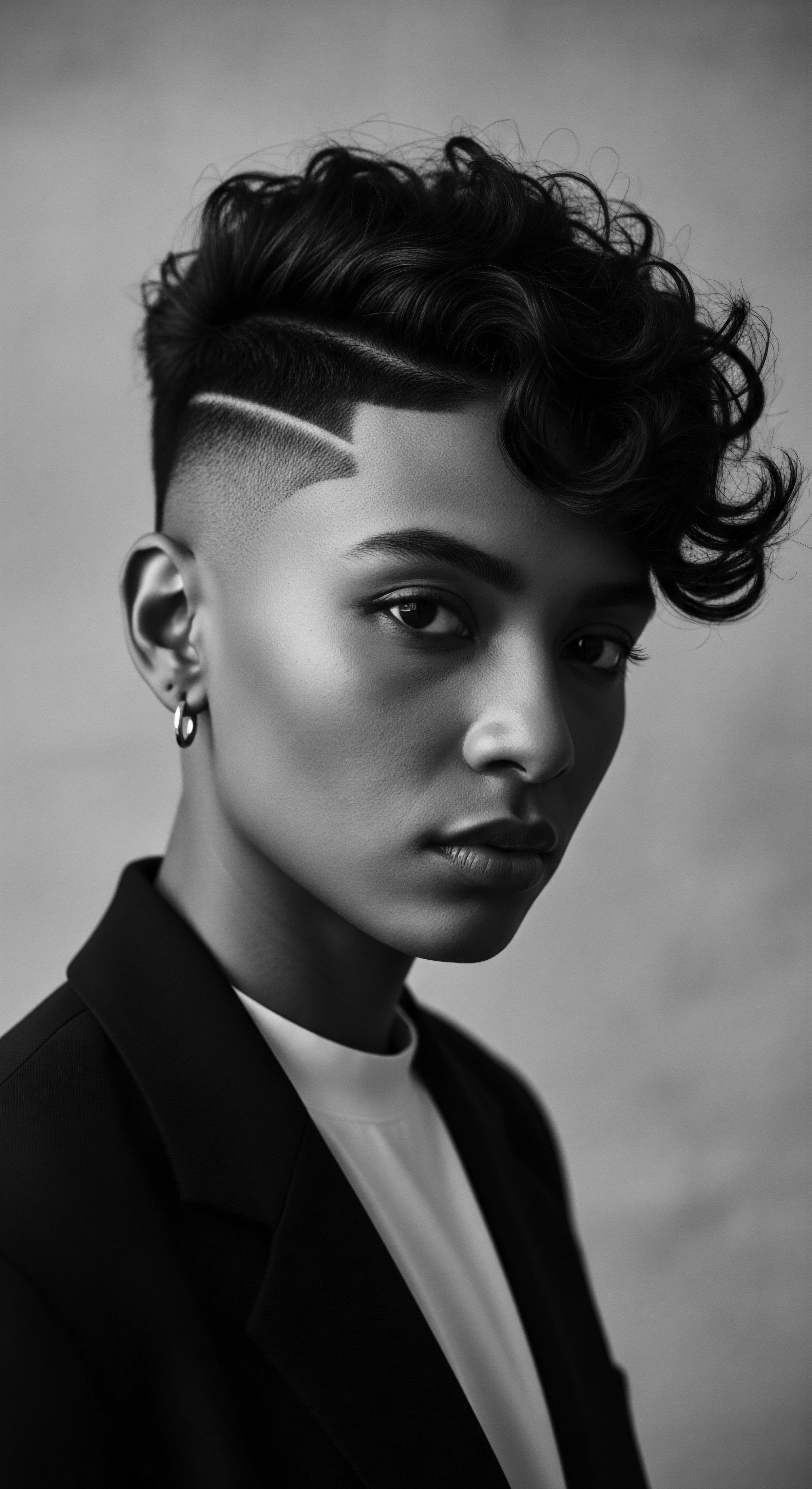
Contemporary Manifestations ❉ The Natural Hair Bias in Professional Settings
The echoes of historical hair politics resonate powerfully in contemporary society, particularly within professional domains. While explicit laws like the Tignon Laws are largely absent today, implicit biases against natural textured hair continue to shape perceptions of professionalism and competence, directly impacting social and economic mobility. This subtle yet pervasive discrimination affects the social standing of Black and mixed-race individuals, influencing hiring decisions, career progression, and overall workplace experiences.
A seminal research study conducted by the Duke University Fuqua School of Business (Rosette Et Al. 2020) provides empirical evidence of this contemporary bias. The findings indicated that Black women with natural hairstyles, including afros, braids, or twists, were consistently perceived as less professional and less competent than Black women with straightened hair, and white women with either curly or straight hair.
Participants in the study, assuming the role of recruiters, rated fictional Black and white female job candidates. Those with natural textured hair received lower scores on professionalism and competence and were less frequently recommended for interviews, particularly in industries with conservative dress norms, such as consulting.
This research highlights a significant barrier to upward social mobility for Black women. The pressure to conform to Eurocentric beauty standards by chemically altering or straightening natural hair carries substantial costs, both fiscal and health-related. The necessity to modify one’s appearance to align with an unspoken, often racially biased, professional standard imposes a unique burden on individuals with textured hair. This societal expectation effectively lowers their social standing within professional environments unless they undertake measures that may compromise their hair’s health or their authentic self-expression.
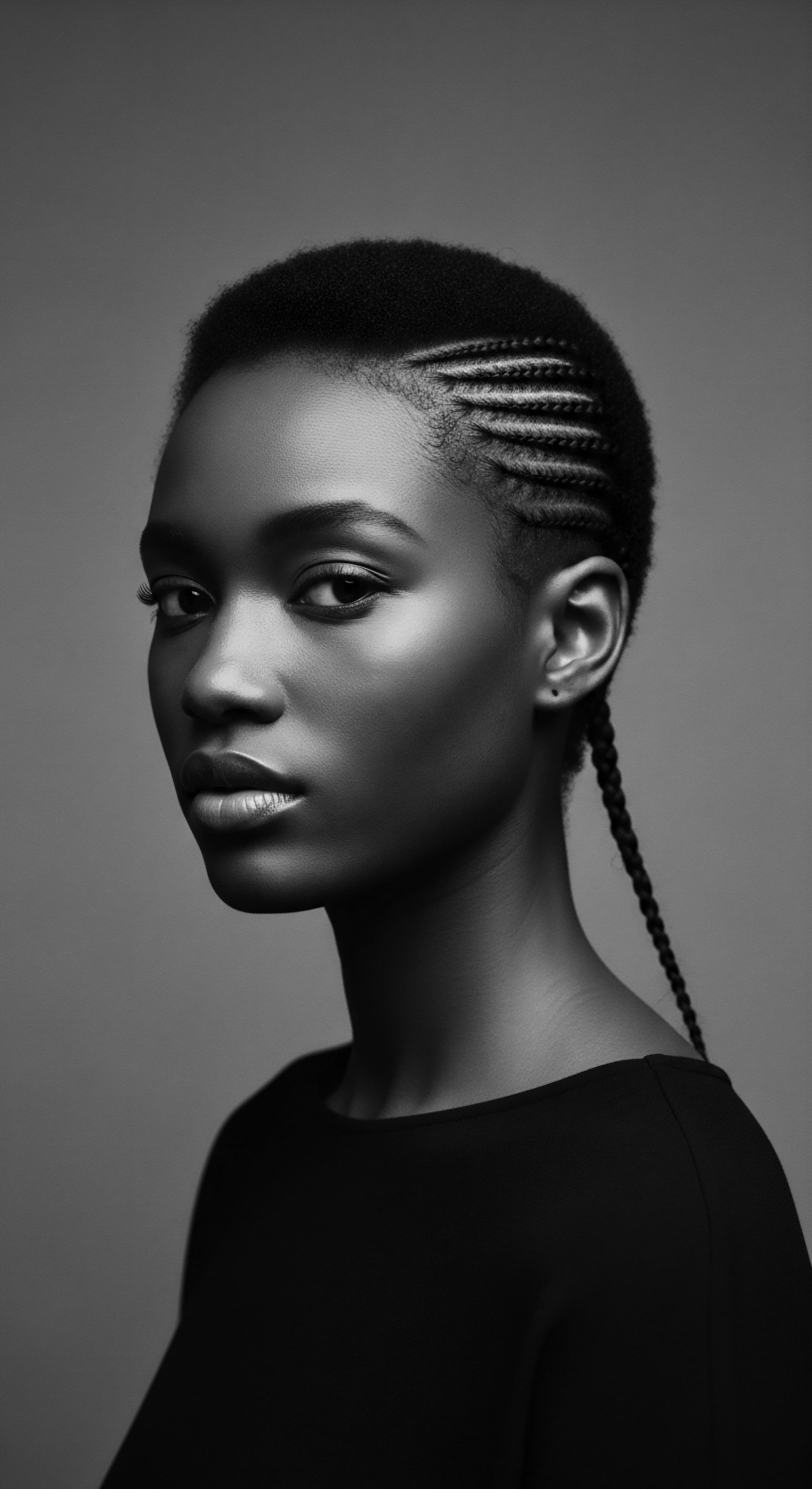
Implications for Social Mobility and Well-Being
The perpetuation of such biases carries profound long-term consequences for individuals and society. For those with textured hair, it can lead to ❉
- Limited Economic Opportunity ❉ Reduced chances for interviews and promotions directly hinder economic advancement, perpetuating wealth disparities. The 2020 Duke study, for instance, found that Black women with natural hairstyles were less likely to be recommended for job interviews compared to candidates with straight hair.
- Psychological Burden ❉ The constant pressure to conform can result in internalized self-consciousness, stress, and a diminished sense of authenticity. The need to change one’s hairstyle to fit into a work environment is a reality for many Black women; a 2019 survey indicated that 80% of African American women felt this pressure.
- Cultural Disconnection ❉ Being compelled to suppress natural hair expressions can sever ties to ancestral practices and cultural identity, eroding a sense of heritage and belonging.
These consequences underscore how Social Status, as determined by hair, extends beyond mere aesthetic preference, impacting an individual’s holistic well-being and their trajectory within the societal framework. The historical context and contemporary research together reveal a persistent pattern where textured hair, a source of immense cultural pride and ancestral connection, has been systematically positioned as a determinant of lower social standing within dominant societal norms.

Reclaiming Social Standing ❉ The Unbound Helix of Identity
Despite these historical and contemporary challenges, the narrative of textured hair is also one of profound resilience and reclamation. Communities have consistently redefined and reasserted the inherent beauty and cultural value of their hair, transforming it into a powerful symbol of resistance and self-acceptance. The natural hair movement, for example, represents a collective societal shift, where individuals are consciously choosing to embrace their inherent textures, challenging long-standing beauty standards and reclaiming their social standing through authentic expression.
This movement is not simply about aesthetics; it is a deep cultural and political statement. It is a conscious act of severing the historical link between straightened hair and social acceptance, thereby dismantling a legacy of imposed inferiority. By celebrating coils, kinks, and waves, individuals are asserting their right to define their own beauty and their own place in the world, unburdened by external judgments. This collective action reshapes the societal perception of textured hair, gradually shifting the markers of social status to include and celebrate diverse hair expressions.
The ongoing legislative efforts, such as the CROWN Act in the United States, represent a crucial step in this reclamation. These laws aim to provide legal protection against hair discrimination, recognizing that hair texture and protective styles are inextricably linked to racial identity. Such legal frameworks work to dismantle systemic barriers that have historically limited the social and economic opportunities for individuals with textured hair, thereby facilitating a more equitable pathway to social standing.
The movement to embrace natural hair is a testament to the enduring strength of ancestral practices and cultural wisdom. It is a powerful reassertion of identity, demonstrating that true social standing arises not from conformity to external ideals, but from an authentic connection to one’s heritage and a profound self-acceptance.
The following table illustrates the historical and contemporary legal and social challenges faced by textured hair, alongside acts of resilience and reclamation ❉
| Era/Context 18th Century Colonial Louisiana |
| Challenge to Social Standing (Hair-Related) Tignon Laws mandated head coverings for free Black women, aiming to diminish their social standing and allure. |
| Community Response/Reclamation of Status Women transformed tignons into ornate, defiant fashion statements, expressing creativity and cultural pride. |
| Era/Context 19th-20th Century Post-Slavery |
| Challenge to Social Standing (Hair-Related) "Good hair" vs. "bad hair" dichotomy; pressure to straighten hair for social and economic integration. |
| Community Response/Reclamation of Status Emergence of Black hair care industry (e.g. Madam C.J. Walker) and later, early natural hair movements advocating for acceptance. |
| Era/Context Late 20th-21st Century Workplace/School |
| Challenge to Social Standing (Hair-Related) Implicit bias against natural hairstyles leading to perceptions of unprofessionalism, impacting job/educational opportunities. |
| Community Response/Reclamation of Status Rise of the modern natural hair movement; advocacy for anti-discrimination legislation like the CROWN Act. |
| Era/Context This overview highlights the continuous struggle and persistent agency of Black and mixed-race communities in defining and asserting the social value of textured hair. |
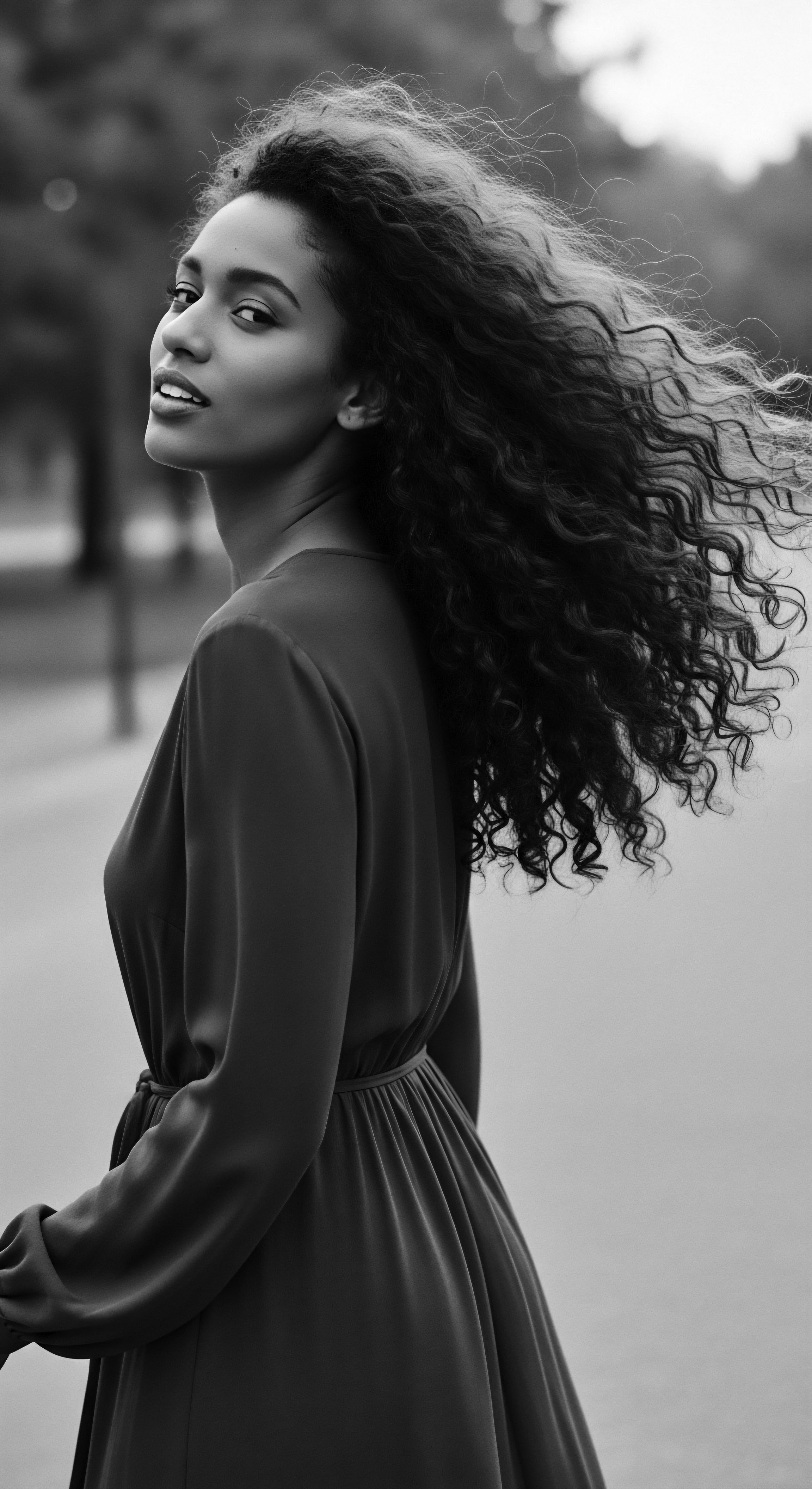
Reflection on the Heritage of Social Status
The journey through the meaning of Social Status, particularly as it intertwines with the story of textured hair, is a profound meditation on human resilience and the enduring spirit of cultural identity. From the ancient hearths where hair was a revered scroll of lineage and societal role, to the complex modern landscapes where its inherent beauty is still, at times, met with prejudice, the narrative remains a testament to the soul of each strand. Our exploration reveals that hair is never merely a physical attribute; it is a living archive, holding the whispers of ancestors, the triumphs of defiance, and the quiet strength of self-acceptance.
The wisdom passed down through generations, often in the tender act of a comb gliding through coils, teaches us that true worth is not dictated by external validation or fleeting societal norms. Instead, it resides in the deep connection to one’s heritage, in the honoring of one’s authentic self. The intricate patterns of braids, the voluminous reach of an afro, the serene flow of locs—these are not simply styles; they are declarations of belonging, symbols of an unbroken lineage, and vibrant expressions of a heritage that refuses to be diminished.
As we look forward, the path is illuminated by the courage of those who, through their hair, have voiced stories of resistance and beauty. The evolving significance of Social Status, seen through this heritage lens, invites us to cultivate a world where every textured strand is celebrated for its inherent splendor and its rich ancestral story. It is a call to recognize that the deepest forms of social standing spring from a wellspring of self-knowledge and an unwavering reverence for the diverse tapestries of human identity.

References
- Byrd, A. D. & Tharps, L. (2001). Hair Story ❉ Untangling the Roots of Black Hair in America. St. Martin’s Press.
- Dillman, C. M. (2013). Louisiana Creole People’s Hair and Dress in the 18th Century. Louisiana State University Press.
- Gould, V. M. (1996). Chained to the Rock of Adversity ❉ From Slavery to Freedom in Black New Orleans. University of North Carolina Press.
- Johnson, J. M. (2020). Wicked Flesh ❉ Black Women, Intimacy, and Freedom in the Atlantic World. University of Pennsylvania Press.
- Kein, S. (Ed.). (2000). Creole ❉ The History and Legacy of Louisiana’s Free People of Color. Louisiana State University Press.
- Opie, T. & Phillips, K. W. (2015). Implicit and Explicit Biases Toward Afrocentric Hair. Journal of Applied Social Psychology, 45(12), 693-706.
- Powell, C. (2018). Bias, Employment Discrimination, and Black Women’s Hair ❉ Another Way Forward. BYU Law Review, 2018(4), 931-950.
- Rosette, A. S. Koval, C. Z. & Ma, L. (2020). The Natural Hair Bias in Job Recruitment. Social Psychological and Personality Science, 11(7), 969-977.
- Sherrow, V. (2006). Encyclopedia of Hair ❉ A Cultural History. Greenwood Press.
- Stewart, W. N. (2018). The Cultural History of Hair. Routledge.
